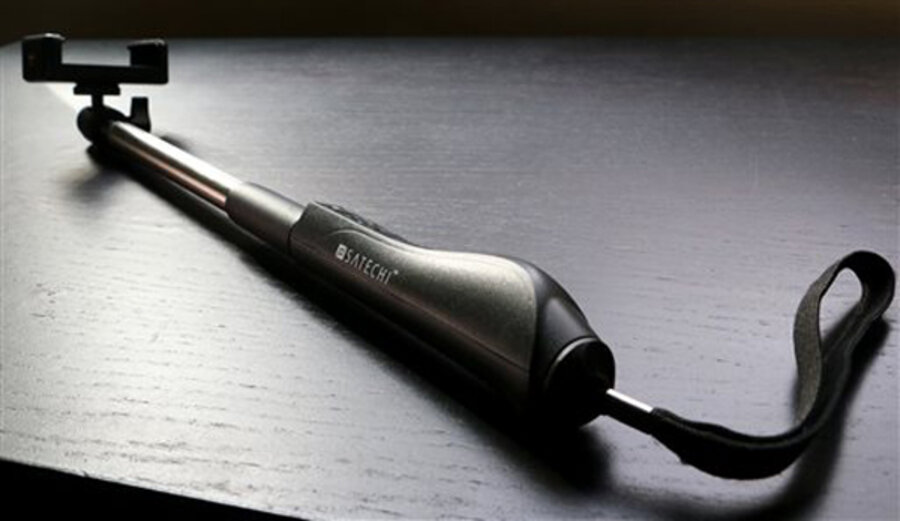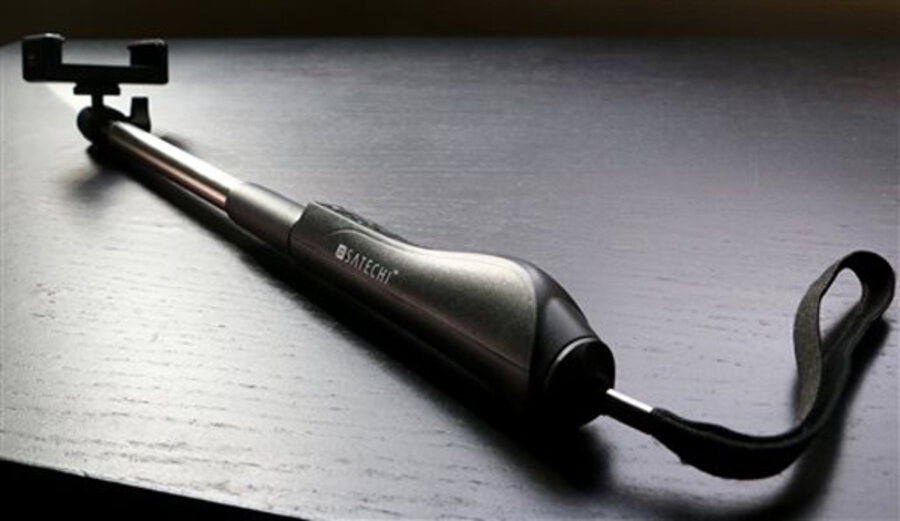Satechi Smart Selfie Extension Arm Monopod ($50):
This telescoping monopod from Satechi helps get more than just yourself in the frame. Similar to the Kodak unit, this monopod has spring-loaded rubber pieces that grip the phone on its sides, holding it firmly in place. From there, you simply extend the telescoping device out to its full three feet and get lots of buddies or surroundings into the shot.
What really helps is that a shutter button on the grip of the pole connects to your phone via Bluetooth, allowing you to snap the selfie without reaching up to the phone. Once I paired the monopod to my phone and launched my default camera app, I was able to easily snap various selfies with a birds-eye view and other vantage points longer than my arm.
The Satechi unit worked fine with my phone's default camera, but not with other camera apps I enjoy, such as FxCamera and Candy Camera.
Samsung's new Galaxy Note models do let you fit more people in by stitching multiple images together. You tilt the phone left and right, and the Note's software does the magic behind the scenes. The shot won't be as instant, though, as what the monopod can provide.








